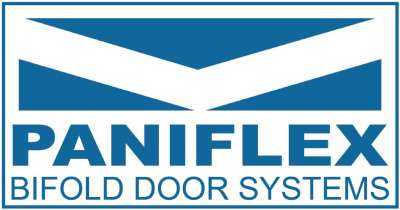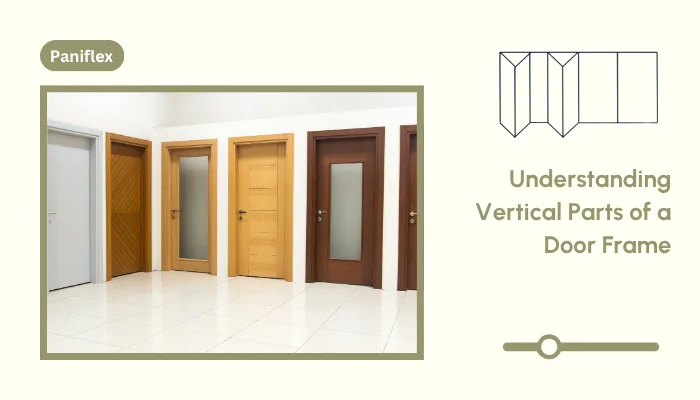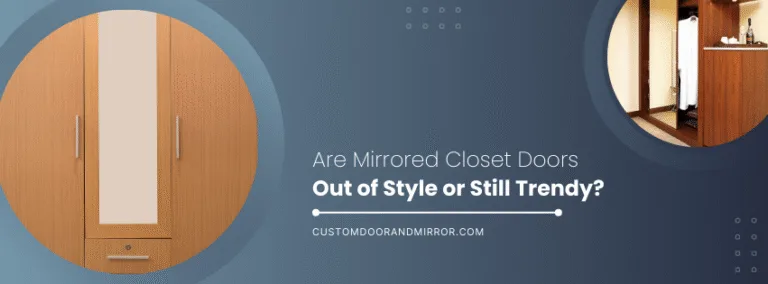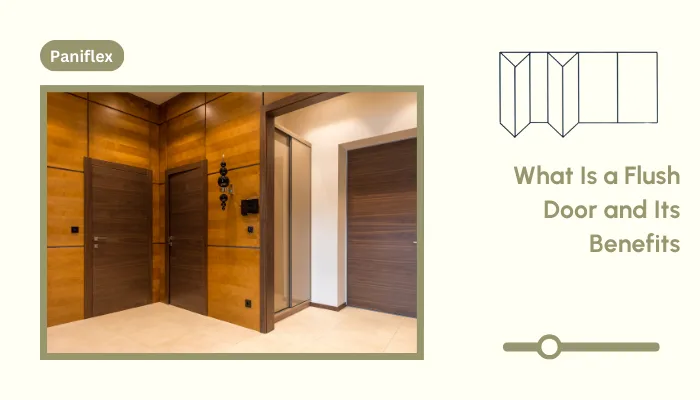Door frames are more than simple supports. They provide structural integrity, align doors properly, and ensure long-term functionality. Understanding the vertical components of a door frame is critical for specifying, installing, or troubleshooting doors across various applications.
We understand how even small details in door systems can make a significant difference in the success of a project. Identifying and working with these vertical parts helps achieve both style and functional goals.
This guide breaks down the key vertical elements of door frames, their roles, and why precision matters in every installation.
Ready to experience the benefits of custom closet doors? Explore our range of Paniflex products now.
TL;DR
- Vertical parts of a door frame include hinge jambs, strike jambs, mullions, and astragals, each with specific structural and functional roles.
- Knowing these components helps ensure proper installation, alignment, and long-term door performance.
- The material choice (wood, aluminum, or steel) impacts durability, appearance, and maintenance requirements.
- Precision fabrication reduces on-site issues and supports smoother door operation over time.
What Are the Vertical Parts of a Door Frame?
A door frame consists of several structural components that support and secure the door within a wall opening. The vertical parts, often overlooked, are essential for proper door alignment, smooth operation, and overall durability. These include the hinge jamb and strike jamb, which run along the height of the frame and hold critical hardware, such as hinges and latches.
In double-door setups, vertical elements such as mullions or astragals may also be present to provide additional stability or sealing. Understanding these components helps ensure correct installation and performance.
Now that we know which parts make up the vertical frame, let’s take a closer look at each and explore its functions and considerations.
Suggested Read: How to Install Sliding Closet Door Floor Guides on Various Surfaces
Key Vertical Components Explained
Each vertical part of a door frame serves a specific purpose in supporting the door and ensuring its proper function. Knowing these components in detail can help during selection, fabrication, and installation, leading to fewer alignment issues and better overall performance.
1. Hinge Jamb
The hinge jamb runs vertically on the side where the door is attached. It bears the load of the door through the hinges and must be precisely aligned to prevent sagging or binding. Reinforcement is especially important in heavy or high-traffic doors.
2. Strike Jamb
Located opposite the hinge jamb, the strike jamb contains the strike plate for the latch or lock. Proper alignment here ensures smooth locking and unlocking without resistance. Misalignment can lead to wear on the latch mechanism.
3. Mullions (in Double or Multi-Panel Setups)
Mullions are vertical supports that separate the door leaves in double-door systems. Fixed mullions add stability, while removable mullions allow a wider clear opening when needed. They must be properly secured to handle structural loads.
4. Astragals (if Present)
Astragals cover the gap between double doors for privacy, soundproofing, or added security. Overlapping astragals provide better sealing, while flush designs maintain a clean appearance without protrusions.
While understanding these components is key, their performance also depends on the materials used. Let’s explore how different materials impact the durability and functionality of vertical door frame components.
Suggested Watch: This video breaks down how and when to use plumb, level, and square, helping you achieve perfect alignment and avoid costly mistakes.
Material Considerations for Vertical Frame Parts
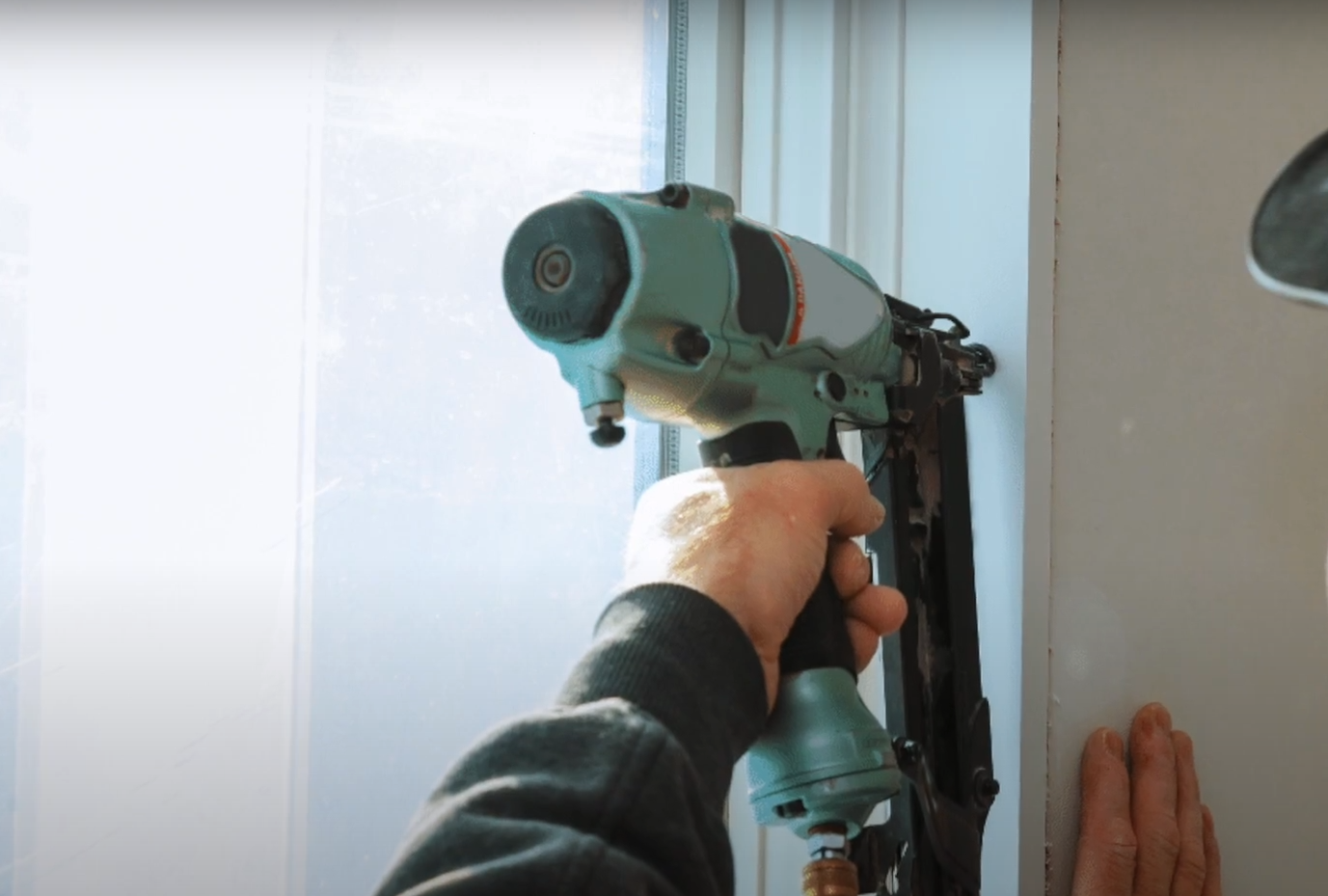
The material you select for door frame components has a significant impact on performance, looks, and maintenance needs. Different materials offer unique strengths and limitations, making it important to match them with the project’s functional and environmental requirements.
1. Wood
A traditional choice for interiors, wood frames offer design flexibility and a warm appearance.
- Pros: Warm, timeless look; easy to customize and repair.
- Cons: Vulnerable to moisture, warping, and pest damage in humid climates.
- Where It Works Best: Ideal for interior doors in residential or low-moisture environments.
2. Aluminum
Lightweight and modern, aluminum is often used for contemporary applications and exterior frames.
- Pros: Resistant to rust; sleek profiles for modern designs.
- Cons: Can dent under impact; lower thermal and sound insulation.
- Where It Works Best: Suitable for exterior doors in coastal or humid areas where corrosion resistance is critical.
3. Steel
Preferred in high-traffic or security-focused projects, steel provides unmatched strength.
- Pros: Exceptional durability; suitable for fire-rated and secure doors.
- Cons: Heavy; requires protective coatings to prevent corrosion outdoors.
- Where It Works Best: Best for commercial, industrial, or security-sensitive installations.
Choosing the right material for vertical frame parts is as important as precise installation. It affects durability, appearance, and the door’s performance over time.
Even with the best materials, vertical frame components can develop problems if not properly maintained or installed. Next, we will explore common issues and practical solutions to keep door systems performing reliably.
Suggested Read: DIY Ideas for Replacing HVAC and AC Closet Doors
Common Issues with Vertical Frame Parts
Even well-constructed door frames can develop issues over time due to environmental exposure, frequent use, or improper installation. Identifying these problems early allows for timely intervention and prevents long-term damage to the door system.
1. Warping of Jambs
Excess moisture or temperature fluctuations can cause wood jambs to warp, resulting in uneven gaps or doors sticking during operation.
Solution: Use kiln-dried or engineered wood in high-moisture areas and apply protective finishes to prevent damage. For existing warping, re-plane or replace the affected jamb section.
2. Loose Hinges and Strike Plates
Over time, screws may loosen from repeated door use, leading to sagging or misaligned locks.
Solution: Replace standard screws with longer, heavy-duty ones that anchor into wall framing. Reinforce weak spots with metal plates for added support.
3. Damaged Mullions or Astragals
High-impact use or accidental force can crack or dislodge these vertical elements, compromising the door’s stability and sealing.
Solution: Inspect regularly for damage and replace compromised parts with more durable materials, such as reinforced aluminum or steel, where applicable.
4. Alignment Shifts Over Time
Building settlement or improper installation can cause frame misalignment, making it difficult for doors to close or latch properly.
Solution: Adjust pivot brackets, shim the frame, or consult a professional for reinstallation if primary settling has occurred.
Regular maintenance and correct material selection can prevent most of these common issues, ensuring smoother operation and an extended lifespan of the door system.
Beyond repairs, many of these challenges can be avoided altogether with precision-engineered frame components. Let us examine why accurate fabrication is critical for achieving reliable and long-lasting performance.
From the Community: Read this Reddit thread to fix cracks in a door frame.
Why Accurate Fabrication of Vertical Frame Parts Matters?
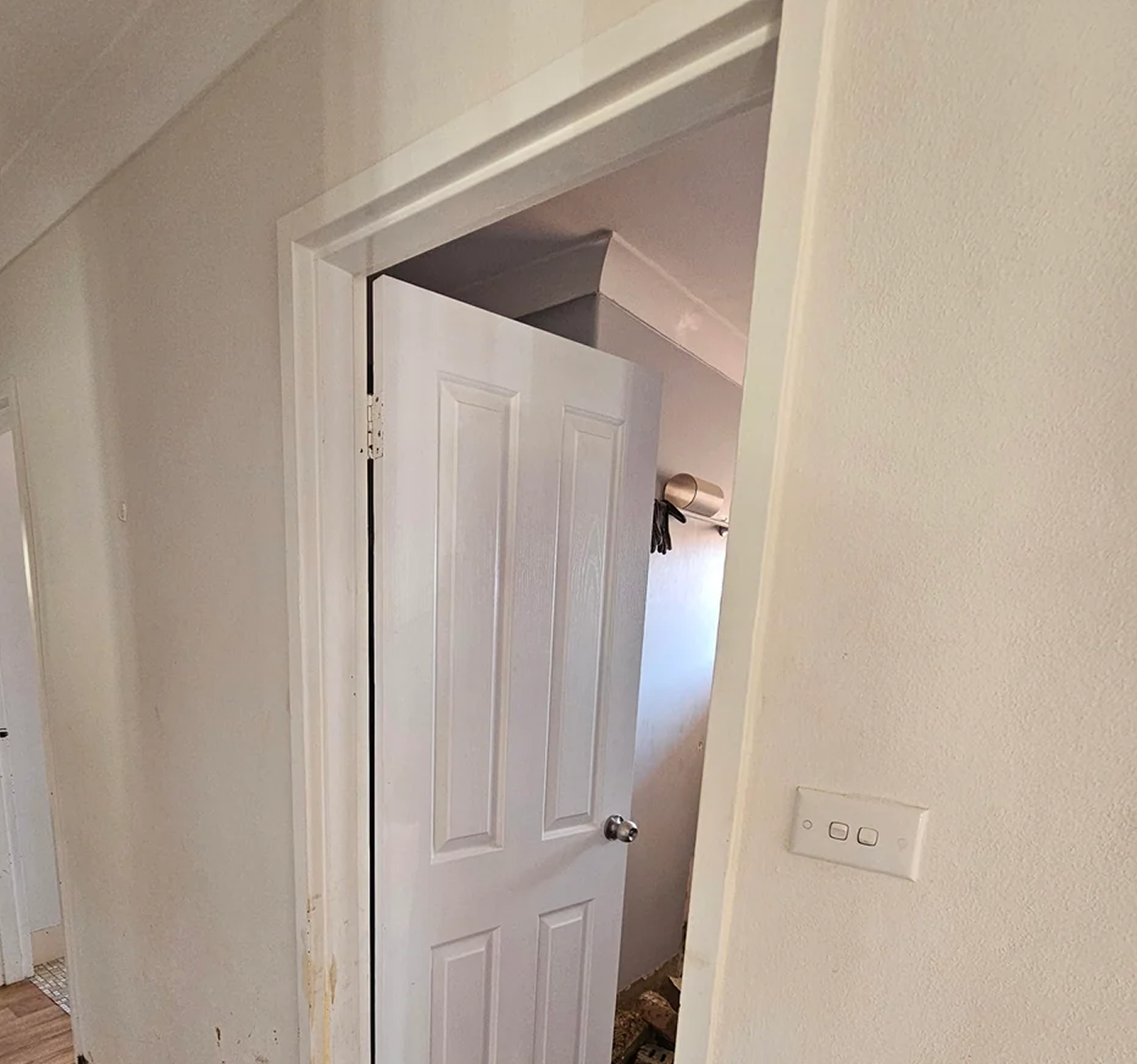
Precision in fabricating vertical door frame components is essential to ensure the door system performs as intended. Poorly made or misaligned parts can create issues during installation and lead to long-term operational problems.
- Maintains Proper Alignment: Precisely fabricated jambs and mullions ensure doors swing or slide smoothly without binding or gaps.
- Supports Structural Loads: Accurate dimensions ensure frame stability, particularly in areas with heavy doors or high traffic.
- Improves Sealing: Tight tolerances help achieve better insulation and soundproofing by minimizing air leaks.
- Reduces On-Site Adjustments: Prefabricated accuracy saves time and labor by avoiding the need for field modifications.
- Enhances Consistency: Uniform gaps contribute to a professional, finished look.
Investing in accurately fabricated frame parts leads to fewer installation problems and greater reliability throughout the life of the door system.
To achieve this level of precision and quality, working with an experienced fabricator makes all the difference. Next, let us see how Custom Door & Mirror delivers solutions tailored to professional needs.
Suggested Read: Installing Sliding Closet Doors Over Carpet
Our Advantage in Fabricated Door Frames
At Custom Door & Mirror, we focus on delivering fabricated door frames that meet the highest standards of precision and durability. Our approach combines advanced fabrication techniques with attention to detail, ensuring your projects achieve both functional reliability and design excellence.
1. Perfect Fit
Every frame is built to exact specifications, eliminating the need for on-site adjustments and ensuring smooth door operation from the first installation.
2. High-Quality Material Options
We offer a wide selection of premium materials, including wood, aluminum, and steel, to match diverse design and performance needs.
3. Integrated Hardware Compatibility
Frames are designed to accommodate hinges, strikes, and accessories seamlessly, supporting reliable operation in high-traffic environments.
4. Consistent Quality
Our fabrication processes ensure uniform quality across single orders and large-scale projects, delivering professional results every time.
5. Flexible Solutions for Any Scale of Project
Whether for residential or commercial spaces, we provide tailored frame solutions that meet the specific demands of each project.
From selecting the right materials to ensuring accurate fabrication, every detail impacts the installation process and long-term performance. With Custom Door & Mirror, professionals gain a reliable partner for precision-engineered door frames that enhance installation efficiency and long-term performance.
Ready to experience the benefits of custom closet doors? Explore our range of Paniflex products now.
Conclusion
Understanding the vertical parts of a door frame is essential for creating door systems that function reliably and look seamless. With this knowledge, professionals can specify, install, and maintain door frames with greater confidence.
At Custom Door & Mirror, we deliver precision-engineered door frames tailored to meet the demanding requirements of various projects.
Our advantages include advanced fabrication techniques, premium material options (such as wood, aluminum, and steel), integrated hardware compatibility, and expert craftsmanship, ensuring consistent quality.
We provide solutions designed for both small residential jobs and large commercial installations. Contact us today for professional guidance and high-performance door frame solutions.
Frequently Asked Questions
1. Why is precision necessary in door frame fabrication?
Precision ensures proper door alignment, smooth operation, and durability. Accurate fabrication eliminates the need for on-site adjustments, prevents gaps or binding, and provides reliable performance in both residential and commercial installations.
2. What are the four advantages of custom fabricating door frame parts?
Custom fabrication enables precise sizing, material flexibility, seamless hardware integration, and expedited installation time. These benefits enhance overall quality, allowing professionals to meet project-specific functional and style requirements.
3.What are the steps in fabricating a custom door frame?
The process involves measuring site dimensions, selecting materials, cutting and machining frame components, integrating hardware provisions, and finishing to ensure durability. Quality checks ensure every frame meets design specifications and installation standards.
4. What are functional tolerances in door frame fabrication?
Functional tolerances define the allowable variations in dimensions to maintain door fit, alignment, and sealing. Tight tolerances prevent operational issues like sticking or air leaks, especially in fire-rated and high-performance door systems.
